Who cursed da Vinci's egg?
- Mar 22
- 12 min read
Updated: Apr 1
Leonardo da Vinci's "Vitruvian Man" is one of the most iconic images in art history, created around 1490. This drawing is a study of the proportions of the human body and is based on the work of the ancient Roman architect Vitruvius, who believed that the human form was a reflection of the universe and human balance.

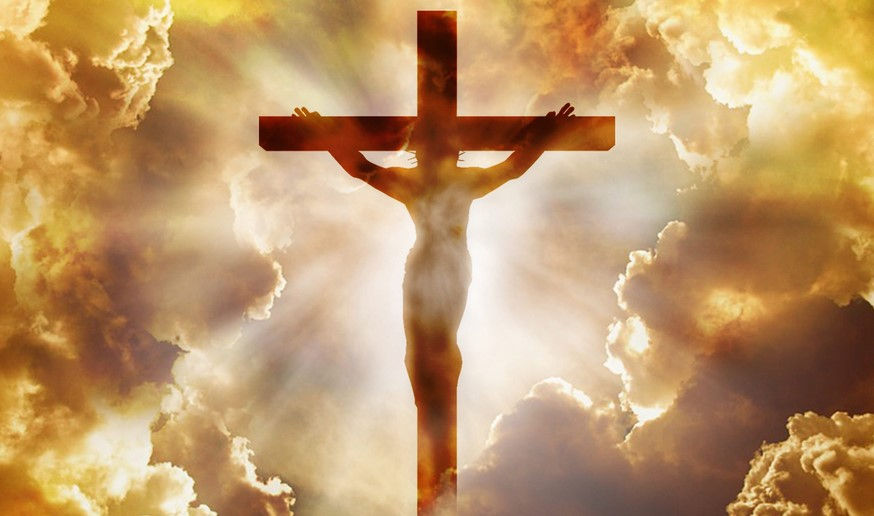
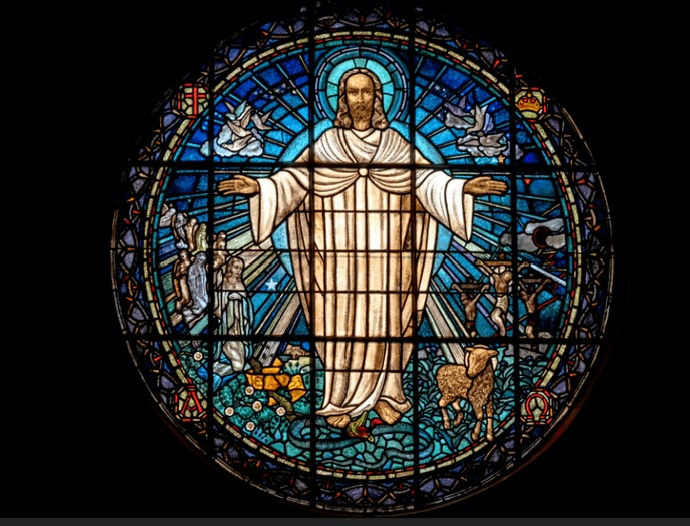
Leonardo da Vinci’s "Vitruvian Man" embodies the concept of balance, both in its aesthetic composition and its philosophical implications. The drawing demonstrates the idea of ideal proportions and symmetry in the human body, which da Vinci believed reflected the harmony and perfection found in nature - Physical Balance, Geometric Balance, and Philosophical Balance.
Leonardo da Vinci's "Vitruvian Man” and the Jesus On The Cross are two iconic works that represent profound concepts related to human proportion, balance, and the intersection of the divine and the human experience.
“Vitruvian Man” is based on the writings of the ancient Roman architect “Vitruvius” illustrates the ideal human proportions, emphasizing harmony and balance in the human form. The drawing symbolizes the Renaissance idea of the unity between body and mind, suggesting that human beings embody the principles of universal balance.
The crucifixion of Jesus is a central event in Christianity, symbolizing sacrifice, redemption, and the intersection of the divine with humanity. It signifies the balance between the spiritual and physical realms, illustrating how the divine engages with the human condition.
Both the “Vitruvian Man” and Jesus On The Cross represent fundamental aspects of the human experience— Physical Balance and Spiritual Journey. The Vitruvian Man embodies the physical form's potential and perfection, while the crucifixion of Jesus speaks to the spiritual struggle and ultimate transcendence. Both resonate with profound themes of balance, harmony, and the complexity of the human experience. Together, they explore the dualities of existence—physical and spiritual, life and death, human potential and divine authority.
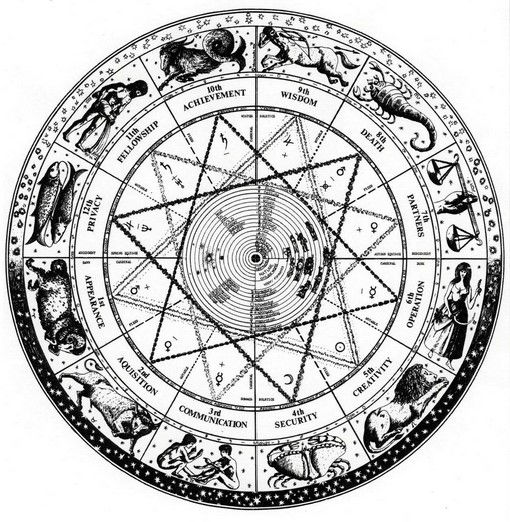
The concept of a "zodiac constellation circle" is often associated with astrology - Circle of the Universe, which divides the sky into twelve sections corresponding to the twelve zodiac signs. Each constellation represents different personality traits and influences according to astrological beliefs. In astrology, the interplay of the zodiac signs reflects the dynamics of human experience and existence, understanding the balance in the universe.

The intersection of Tarot, astrology, and gypsy culture, later related to Jewish culture offers a fascinating exploration of divination, spirituality, and the understanding of life’s cycles. Originated in the 15th century as a card game in Europe but evolved into a tool for divination and self-reflection in the 18th century.
Tarot is often used for guidance and insight into personal dilemmas or future possibilities. The zodiac wheel, which encompasses twelve signs, is often used in conjunction with tarot readings for deeper insights. Each tarot card can be associated with specific astrological signs or planets, adding layers of meaning to the card during a reading.
Gypsy culture (Romani people), often referred to in popular contexts as "gypsy," has a rich tradition of art, music, and spiritual practice, deeply rooted in ancient customs. The Romani people have traveled across Europe and beyond, adapting their practices while holding onto their identity. Romani culture has embraced various forms of divination, including palmistry, crystal readings, and tarot. Tarot reading is often seen as a means of connecting with a higher power or accessing spiritual insights to balance life.
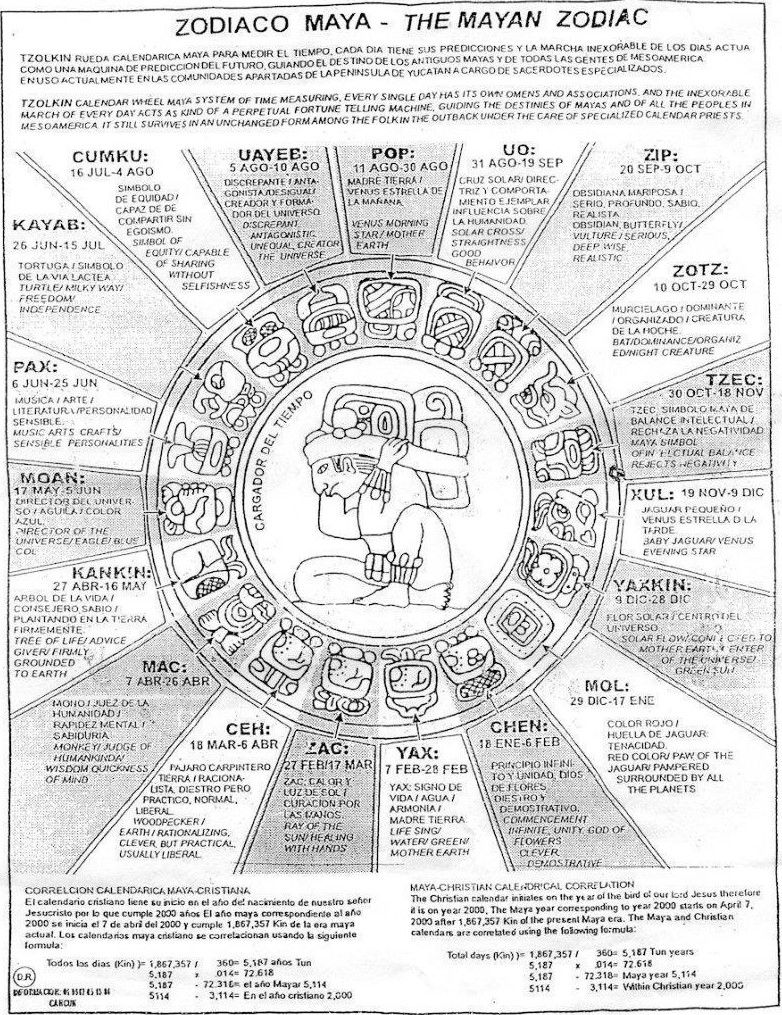
Maya culture, known for its advanced understanding of astronomy, mathematics, and timekeeping, had a profound and intricate relationship with astrology and the cosmos. The Maya utilized a cyclical view of time and integrated celestial movements into their daily lives, religious beliefs, and agricultural practices.
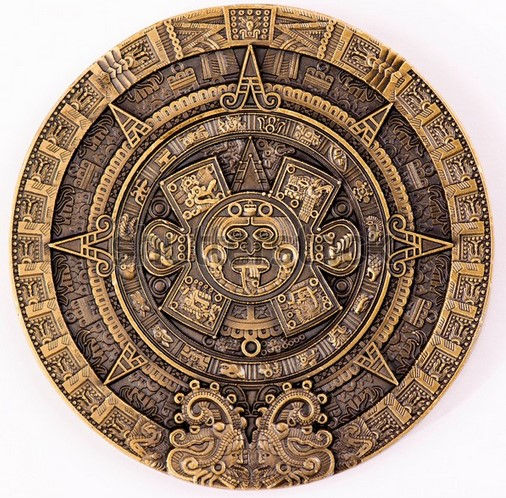
Maya Cosmology also viewed the universe as a complex system characterized by cycles and interconnectedness. They believed that celestial bodies, including the sun, moon, planets, and stars, influenced human balance and natural occurrences. This cosmology was reflected in their mythology, rituals, and calendar systems, emphasizing the significance of time and its cycles - Maya Calendar Systems and Astronomy and Celestial Bodies
The Maya closely observed the movements of several celestial bodies, most importantly the sun, moon, and planets, particularly Venus. The Maya believed that individuals were influenced by the positions of celestial bodies at the time of their birth. This is similar to the zodiac systems in other astrological traditions.
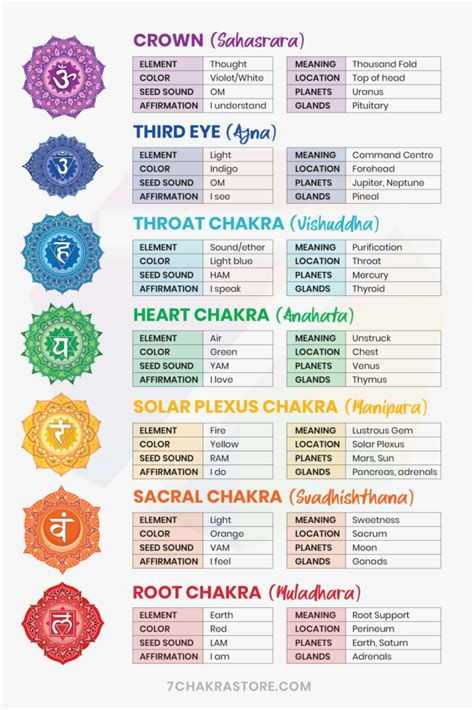
The concept of chakras is rooted in ancient spiritual traditions, primarily within Hinduism and Buddhism, and has evolved over thousands of years. Understanding the history of chakras involves exploring their origins, how they've been integrated into various philosophies, and their modern interpretations.

The earliest references to concepts resembling chakras can be found in ancient Indian texts known as the Vedas, which date back to around 1500-500 BCE. The chakra system was also embraced by certain Buddhist traditions. Buddhism tends to focus more on personal awakening and enlightenment. The concept of subtle energies exists in Buddhist practices, though the number of chakras and their interpretations may vary among traditions.
The translation and interpretation of Eastern spiritual texts in the 19th and early 20th centuries introduced the chakra system to the Western world. The New Age movement in the late 20th century further modernized the chakra system, incorporating elements from various spiritual and healing practices, often blending them with psychology and wellness.
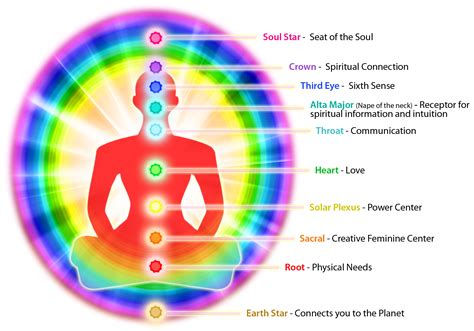
Modern Chakra Theories linked to Healing Practices and Scientific Perspectives.
From ancient Indian texts to ancient rituals or modern healing techniques, chakras remain a profound symbol of consciousness, energy flow, and the pursuit of spiritual balance.
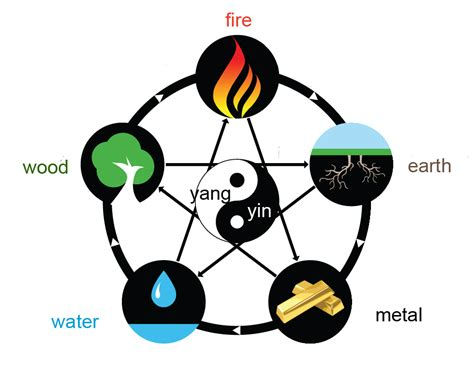
Taoism is ancient Chinese philosophical and spiritual tradition that emphasises living in harmony with the Tao (or Dao), which is also understood as the fundamental Buddhism principle that is the source of all existence. The concept of balance is central to Taoist philosophy and practice, influencing various aspects of life, including health, relationships, and spirituality.
One of the most significant concepts in Taoism is the idea of yin and yang. Balance between yin and yang leads to harmony in all aspects of life. When one aspect is overly dominant, it can lead to disharmony or imbalance, which Taoism advises to correct through understanding and moderation.
In traditional Taoist thought, the five elements (wood, fire, earth, metal, water and 12 animal zodiac signs, each animal has a symbolised life parameters too.) play a vital role in understanding balance within nature and human life. Taoism encourages simplicity in lifestyle and humility in behavior. By reducing desires and complications, individuals can achieve a more balanced and harmonious life. Taoists emphasize the importance of connecting with nature, observing natural rhythms and cycles can help cultivate a balanced mindset and lifestyle.
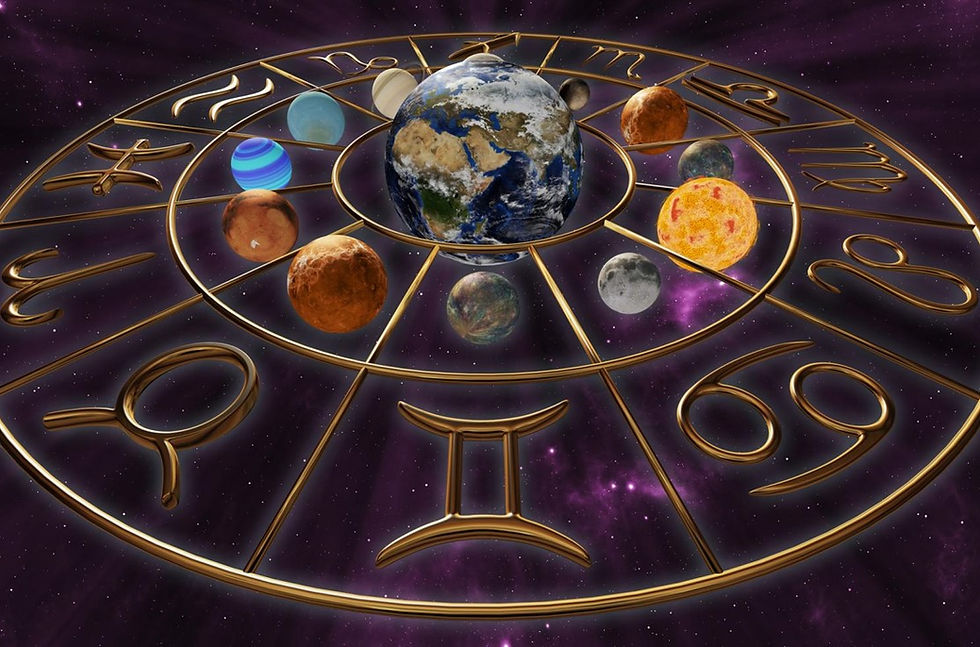
In astrology, particularly in Vedic (Indian) astrology, the concept of the “nine planets”, known as the “Navagraha”, plays a significant role in life prediction, shaping an individual's personality, experiences, and destinies. Surya (Sun),Chandra (Moon),Mangala (Mars),Budha (Mercury),Brihaspati (Jupiter),Shukra (Venus),Shani (Saturn),Rahu (North Node of the Moon),Ketu (South Node of the Moon)
Nine planets in astrology serve as powerful symbols of the energies that shape individual destinies. Each planet influences various aspects of life, from personality traits to experiences and challenges. By understanding the characteristics and effects of these planets, individuals can gain insights into their life paths, relationships, and potential growth areas. Astrologers use the positions of these planets in relation to one another, along with their transit patterns, to formulate predictions and offer guidance for personal development and decision-making. Ultimately, the insights provided by astrology and its planetary influences can empower individuals to navigate their lives with greater awareness and understanding.
In summary, no matter what kind of culture, religion and nation share the goal of balanced and harmonious coexistence. Human beings can apply this philosophical system to people, animals, plants, nature, the world, and the universe, from which it can be concluded that everything in the world is pursuing a balanced rule. Astronomers and astrologers believe that through the astrological system and the astronomical calendar, it is possible to analyze and predict the internal and external information characteristics of human beings - health, wealth, life and death, etc., and after collating this information, it becomes a so-called life pattern. Mysterious professions such as fortune tellers and life readers also appeared.
Everyone has their own life pattern parameters, all things in the universe are handed over to people who match the parameters of the life pattern to complete them. Then, we have scientists, teachers, doctors, artists and other professions, and people are unconsciously assigned to a suitable position from the parameters of their own life pattern. The clouds and birds in the sky, the fish and waves in the ocean, the earth and trees in the mountains, the cities and civilizations on our lands. Every element in the world resides in its harmonious position, expressing its inherent qualities and maintaining the universe's balance.
95% of individuals are striving to find their own balance in life. For instance, low-income individuals work diligently to earn money, children focus on acquiring knowledge, and those who are obese aim to lose weight—all in pursuit of their personal equilibrium.
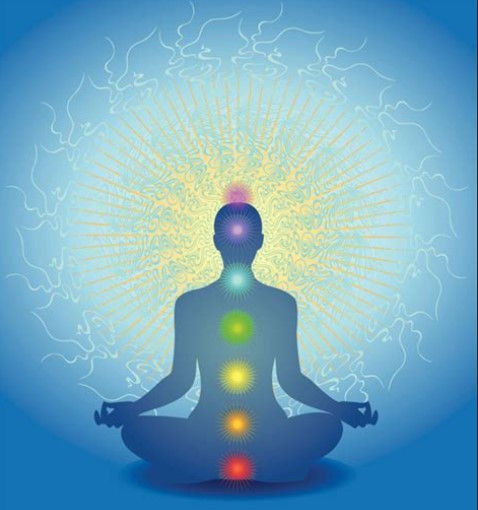
However, there is such a small amount of 5% human beings in the world that set them apart from ordinary people, and their life parameters grant them a profoundly disruptive power capable of breaking the balance. This small number of people is polarized, with their lives potentially being either highly successful or extremely devastating. Because of the special life parameters of this group of people, they can be great scientists, inventors, billionaires or presidents, etc., they may also become murderers, suffer from dementia, or experience mental illness or split personality disability etc.
Religion brings humanity and the world the mission of salvation and hope, and all religions are based on a state of harmony and balance for all beings in the universe which can be regarded as the 95%; religion exists to pray for the blessing of all things in the world, not to kill people. Conversely, cults, on the other hand, are exactly presenting the 5%, harm or curse people through the basis of religion.
Below are two instances of the 5% unique cluster.
Case 1 (referenced in the previous article)
Park Geun-hye is a South Korean politician who served as the 18th President of South Korea from February 25, 2013, until her impeachment on March 10, 2017. She is notable for being the first female president in South Korean history and the first president to be impeached and removed from office.
Park faced criminal charges, including bribery, abuse of power, and coercion. In April 2018, she was sentenced to 24 years in prison, later extended to 30 years in a subsequent ruling. In December 2021, her sentence was reduced, and she was released on parole after serving nearly five years in prison, citing health concerns.
Park's presidency was marred by a corruption scandal involving her close associate, Choi Soon-sil. Allegations emerged that Choi had undue influence over government affairs and that Park had colluded with her in pressuring businesses to donate to non-profit foundations that Choi controlled.
South Korean conspiracy theory
The origin of the conspiracy theory was that in 2016 Park Geun-hye was under investigation, and Choi Soon-sil was a close friend, Choi was the head of shamanism. Shamanism is a religious phenomenon focused on the shaman, an individual thought to gain various abilities through trance, ecstatic, or unifying religious experiences.
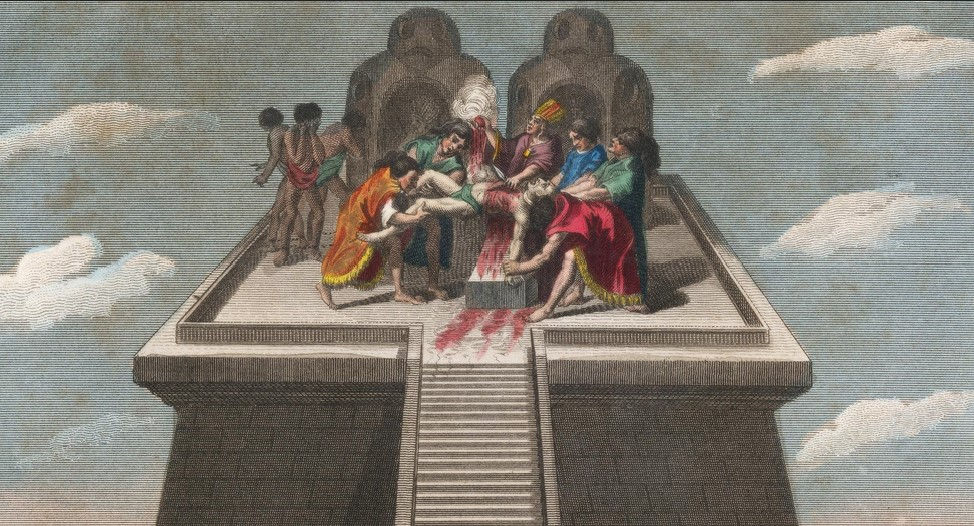
Shamanism in Korea, as well as in some Southeast Asian countries (Thailand, Philippines or Taiwan) is closely associated with cult rituals of human sacrifice. Human sacrifice is the act of killing one or more humans as part of a ritual, which is usually intended to please or appease "gods" or human rulers etc.
A shamanistic witch ascends to the role of national consultant, seizes power, infiltrates the top of the government, and secretly manipulates the entire country. The following are the events of sacrifice that religious workers have compiled and analysed:
Fire ritual: Subway arson, 193 death, Daegu, South Korea
Water ritual: Cruise ship sank, 304 death, Incheon Port on the way to Jiju Island, South Korea
Earth ritual: Itaewon crowd accident, 159 death, Seoul, South Korea
Metal ritual: KTX high-speed rail derailment incident, 0 death, Seoul to Busan, South Korea
Wood ritual: Jeju Airliner crash, 179 death, Jeju Island, South Korea
Initially, these events did not cause any suspicion among South Korean citizens (because of the culture influence of Chinese Fengshui based Taoism.) It was only when the 18th president, Park Geun-hye, faced an investigation for alleged secret connections to shamanism that conspiracy theories regarding human sacrifice began to emerge.
South Korean reports indicate that the shamanic witch Choi advised President Park Geun-hye of South Korea that human sacrifice could improve the country's fortunes (because the fortune of South Korean government is not optimistic), and Choi would oversee the entire process of the sacrifice ceremonies. Choi claimed that every sacrificial ritual aligns with cosmic energy; the date, time, the number of deaths involved in the catastrophe, and the ages of the deceased were meticulously chosen and calculated through cult practices and ancient calendars.
During Park Geun-hye's tenure, Choi was also given the power to command the army, which she did cult practices in barrack, creating panic among the South Koreans in order to enrich herself. During this time, unusual social phenomena emerged, such as the unexpected deaths of wealthy individuals' children, the inexplicable rise in popularity of certain celebrities, or politicians with no connections suddenly appear in the government parliament in a team.
All of this was Choi meticulously organised and designated, asserting that she can discern each person's life path, wealth, and death are determined by combining one's birthday and energy with the universe, time, year, and calendar. Additionally, she believes she can identify who will benefit the nation's fortune and who will bring misfortune to the country. The President of South Korean Park Geun-hye was undoubtedly convinced by the brainwash of the witch - Choi.
The results of human sacrifice were obvious, resulting in the death of countless innocent lives. In the end, corruption did not bring prosperity to the country. In 2018, a court sentenced Choi to 20 years in prison on corruption charges. Due to Choi's concurrent involvement in her father's religious cult, reporting media have called her "South Korea's Rasputin", in reference to Russian mystic Grigori Rasputin.
However, the most surprising "curveball" was not Choi's final court sentence. Instead, some religious workers had a lot of questions about the whole incident and then continued to investigate Choi. They converted and verified the data in the way Choi described, whether the ritual of human sacrifice was related to the fortune of the country, and whether the ritual of human sacrifice actually brought good fortune to South Korea. The findings were remarkable, religious workers concluded that all cult rituals had nothing to do with the fortunes of the country.
The truth, the witch, Choi, is exactly a person with a unique life parameters. She calculated the parameters of her own life, so as to deduce the date of her death, as well as the date of some life turning points and disaster years. All the rituals of human sacrifice were for her own. Due to her special life parameters, she calculated that in many specific years and times, she would suffer an accident or die, but as long as a large number of people died for her, she could escape the disaster, which is the principle of human sacrifice. In short, she had to keep people ludicrously dying to keep her own life safe. Those rich kids, celebrities, and politicians who died suddenly were all people with whom she had a personal vendetta or the opposite of her life parameters, whom she assassinated through "cult power". The celebrities who became popular, and the politicians who suddenly appeared in Congress in a team, etc., are all people she calculated to have a blessing energy on her own energy, and she believed that can grab those people's fortune around her. This series of absurd acts eventually sent her own hands to prison.
Case 2
Stephen Hawking (1942–2018) was a theoretical physicist, cosmologist, and author known for his significant contributions to the fields of black holes, general relativity, and quantum mechanics. He was diagnosed with a rare form of motor neurone disease known as amyotrophic lateral sclerosis when he was 21 years old. Despite his diagnosis and the significant physical limitations it caused, Hawking was able to continue his work in theoretical physics and cosmology, contributing groundbreaking ideas in the fields of black holes, cosmology, and quantum gravity. His remarkable abilities as a scientist, his resilience in the face of adversity, and his contributions to science made him an inspirational figure worldwide.
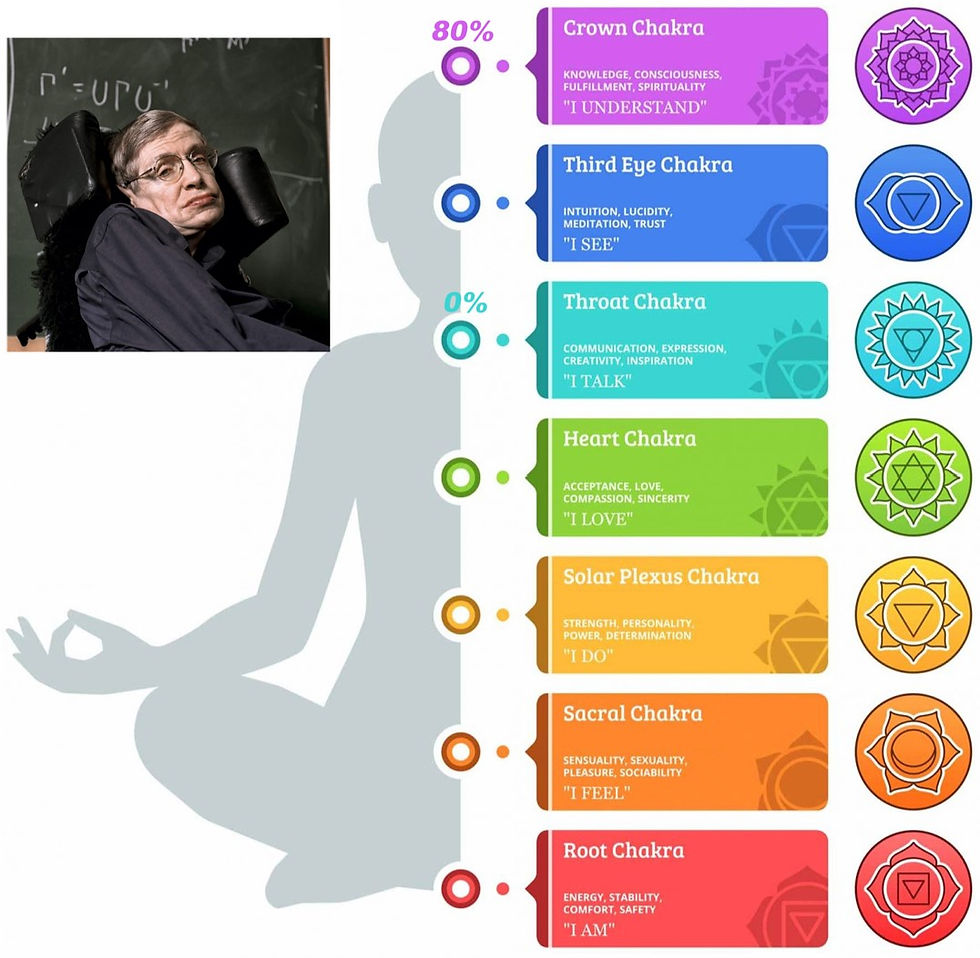
Hawking's research at Cambridge indicated he is an atheism, yet his Black Hole Physics, Theoretical Models of the Universe, and book "A Brief History of Time" all examined the universe's energy and balance, which bear a notable resemblance and strong connections to theology. Hawking passed away on March 14, 2018, did he predict the onset of COVID-19 was a curse?
Hawking's life energy parameters are evidently highly unbalanced and polarised, and his extraordinary contributions to cosmology and exceptional talent are evident. However, his disability is undeniably a devastating aspect of his life. Hawking is a prime example of a special population in the 5%. Similar figures include Beethoven, Albert Einstein and other historical figures.

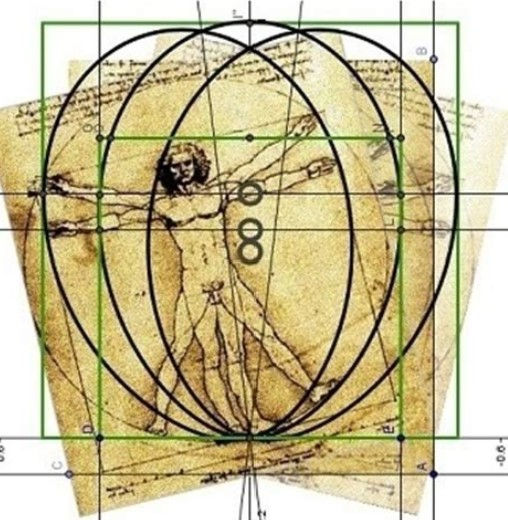
Egg painting is fundamental in fine art education; nearly everyone encounters an egg in their art enlightenment studies. The balance theory of eggs is central to Leonardo da Vinci's paintings, signifying that everything in the world has a balance point. Discovering the balance point of eggs is essential knowledge for identifying the balance point of all things in the world.
If there is an unexpected imbalance in the egg supply of your life, it might be due to a curse on the eggs. Who cursed da Vinci's egg?
The greatest fortune in the universe always comes from being nice to people and making kind to the world.
Anna Widawska
Warsaw, Poland
05:10 PM Saturday
March 22, 2025
Resource Co-writer: Chalita Chittarrapan, Bangkok, Thailand
Resource Reference: Juyeong Woo, Seoul, South Korea
Writing Co-edited by Artpendix Team
Artpendix Press




Comments